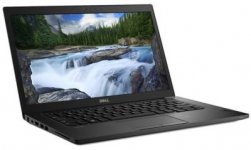
4 Specs to Look Out For When Choosing a Laptop

You are looking for a new laptop, so where do you begin?
If you aren't tech minded, it can be a little overwhelming when faced with a list of specs that you don't understand. With that in mind, we are going to break down the most important factors to consider when buying a new laptop and explain it in a way we all can understand.
1. Screen Size
This may seem like an obvious one, the bigger the number the bigger the screen. Laptop screen sizes range from 11 up to 17.3 inches, with the most common being between 13 to 15 inches. The size of the screen typically determines the overall weight of the laptop - so if portability is a big factor, then you are better to go for a smaller screen - we suggest a 13 inch.
2. Screen Resolution
Everything you see on your computer screen is made up from pixels. What are pixels? Pixels are basically little square dots that make up images. The resolution refers to the number of pixels the screen is able to display, therefore determining the amount of information you are able to see on the screen. The higher the resolution, the more you can see.
The screen resolutions you are most likely to come across are:
HD (1366 x 768)
Full HD (1920 x 1080)
There are higher resolutions available, but unless you are planning on carrying out extensive design work or using several media applications at one time, the HD or Full HD resolution will be more than sufficient.
3. Processors
OK, so now we are getting into the slightly more technical part. The processor (or CPU) is what runs your laptop and dictates the speed at which applications are run and how many can be run at the same time.
When looking at all the numbers and details of a processor, it can be quite intimidating. A general rule of thumb to take away is - if you expect to be operating several applications at one time the higher the number of independent CPUs you want within the processor. As with most things, the higher the number the more powerful the processor.
4. Hard Drive Storage
SSDs (Solid State Drives) are more commonly found within computers and have more options when choosing storage capacity, but as with most things the higher the number the higher the cost. The two most common SSD sizes are 256GB and 512GB - either of these will be more than enough for day-to-day use, but if you are planning on using your laptop for gaming or running larger applications such as photoshop or any design software, go for a machine with as much storage as you can afford.
We hope that the above basics assists you with "techy" jargon that is used to purchase a laptop and our Team are on standby to answer any other questions that you may have.







